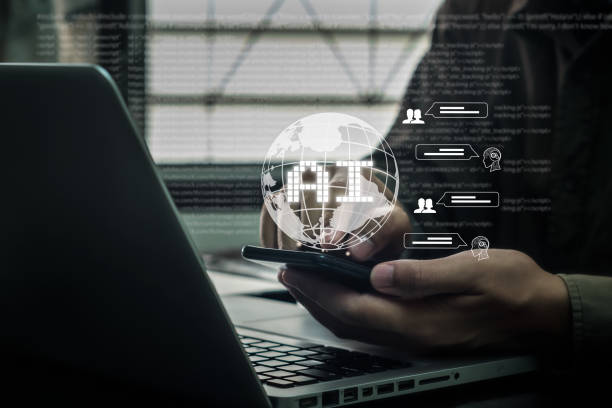
In today’s interconnected world, where technology is an integral part of our daily lives, the need for robust cybersecurity measures has never been more pronounced.
As our digital landscape continues to evolve, so do the methods employed by cybercriminals to exploit vulnerabilities and compromise sensitive information.
Enter Artificial Intelligence (AI) algorithms, the digital sentinels that are reshaping the landscape of cybersecurity.
In this comprehensive guide, we’ll delve into the intricacies of how AI algorithms are revolutionising cybersecurity, fortifying our defences, and thwarting cyber threats.
What to know about the Role of AI in Cybersecurity

The Digital Guardians: Booz Allen says AI algorithms play the role of vigilant guardians, tirelessly monitoring networks and systems for any signs of malicious activity.
Unearthing the Unusual: AI algorithms excel in detecting anomalies and patterns that might go unnoticed by human eyes, making them an indispensable asset in the battle against cyber threats.
Harnessing the Power of AI for Cybersecurity
Data Analysis and Pattern Recognition
Data: The Fuel for AI: AI algorithms thrive on data. They analyse vast amounts of historical data, including past cyberattacks, network traffic, and user behaviour, to identify trends and potential threats.
Cracking the Code: According to LinkedIn, AI’s prowess in pattern recognition enables it to identify complex sequences of actions that might signify a cyberattack in progress.
Behavioural Analysis
The AI Observer: AI algorithms establish a baseline of normal behaviour, allowing them to spot deviations and anomalies that might indicate unauthorised access or malicious intent.
Early Warnings: AI’s ability to predict unusual behaviour sets off alarms, notifying cybersecurity professionals of potential threats before they escalate.
Real-time Threat Detection and Response
Rapid Reflexes: AI-driven systems have the remarkable ability to detect cyber threats in real-time, enabling organisations to respond swiftly and minimise damage.
Automated Defence: Once a threat is detected, AI can trigger automated responses, such as blocking suspicious activity or isolating compromised systems.
Predictive Analytics
Anticipating the Unseen: AI algorithms use historical data and predictive analytics to forecast potential cyber threats, allowing organisations to proactively strengthen their defences.
Staying One Step Ahead: By analysing past attack patterns, AI can predict emerging trends and attack vectors, empowering organisations to prepare for future threats.
Advantages and Challenges of AI-Enhanced Cybersecurity
Advantages of AI in Cybersecurity
Speed and Efficiency: AI algorithms process vast amounts of data at lightning speed, enabling rapid threat detection and response.
Continuous Learning: AI systems continuously learn from new data, evolving to counter novel and sophisticated cyber threats.
Non-stop Surveillance: AI’s tireless monitoring ensures round-the-clock protection against cyber threats, reducing the window of vulnerability.
Challenges in AI-Powered Cybersecurity
Data Privacy Concerns: The reliance on extensive data raises concerns about privacy and data protection regulations.
False Positives: Overzealous AI algorithms might trigger false alarms, flagging legitimate activities as potential threats.
Practical Applications of AI in Cybersecurity
Intrusion Detection Systems (IDS)
Virtual Bouncers: KnowledgeHut cited that AI-powered IDS analyse network traffic and user behaviour to detect and prevent unauthorised access attempts.
Malware Detection and Prevention
Guarding Against Malicious Code: AI algorithms scrutinise files and application behaviour to identify and block malware before it can execute.
Email Security: Stopping Phishing Attacks
Phishing Police: AI analyses email content and sender behaviour to spot phishing attempts and protect users from falling victim.
The Future of AI and Cybersecurity
As technology continues to advance, the synergy between AI and cybersecurity promises intriguing possibilities:
Adaptive Defence: AI algorithms will become even more adept at adapting to new and evolving cyber threats, providing advanced protection.
Anticipating Zero-Days: AI might predict and counteract zero-day vulnerabilities, safeguarding systems against previously unknown threats.
Alright my dear readers, let us look into the most frequently asked questions (FAQs)
Can AI algorithms replace human cybersecurity professionals?
No, AI complements human expertise, enhancing threat detection and response capabilities.
How do AI algorithms learn about new cyber threats?
AI learns from historical data and continuously updates its knowledge to adapt to emerging threats.
Can AI eliminate all cyber risks?
While AI significantly enhances cybersecurity, no system can guarantee absolute protection against all threats.
What types of cyber threats can AI effectively combat?
AI is effective against various threats, including malware, phishing, ransomware, and intrusion attempts.
How does AI impact businesses’ cybersecurity strategies?
AI enhances businesses’ cybersecurity by providing rapid threat detection, reduced response time, and enhanced defence mechanisms.
Conclusion
In a world where the digital realm plays an increasingly vital role, the security of our online activities and data is paramount.
AI algorithms emerge as a formidable ally in the ongoing battle against cyber threats.
Their ability to analyse, predict, and respond empowers organisations and individuals to navigate the digital landscape with confidence.
As we continue to embrace technological advancements, the symbiotic relationship between AI and cybersecurity ensures a safer digital future for us all.








